Task 1
Determine the capacitance of the capacitor, if its resistance at the third harmonic is 500 Ohms.
Decision:
capacitor resistance XС = 1 / 3ɷС = 500 Ohm
C = 1 / XC ∙ 3ɷ = 1/500 ∙ 3 ∙ 314 = 2, 12 μF
Task 2
Determine the resistance of the coil, at the signal with the fifth harmonic, if the first harmonic
XL = 5 ohms.
XL5 = 5 ∙ ɷ ∙ L = 25 Ohm
Task 3
Determine the distortion factor and harmonic coefficient, if a signal is input to the device:

Solution: calculate the effective value of the source voltage

U1 = 0
CI = U1 / U = 0
Harmonic factor KG = Ug / U
harmonics actual value

KG = Ug / U = 104, 4 / 106.3 = 0.928
Task 4
Determine the values: U1, I2

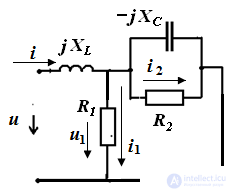
Given:
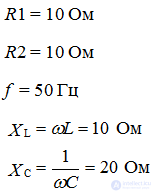
The calculation is carried out by the method of superposition (superposition).
1. Calculation of the constant component of U = 20 B
The scheme takes the form

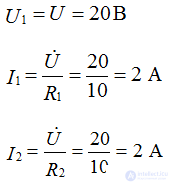
2. First harmonic calculation
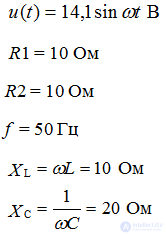
Decision
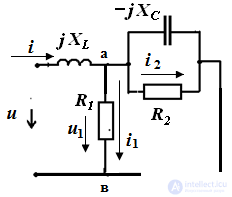
4 branches, two knots
You can solve any method: equivalent transformations, two nodes
Solve the method of equivalent transformations.
Find the equivalent resistance:
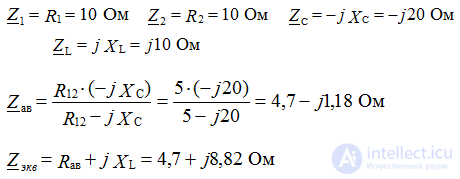
The effective value of the input voltage:

Complex stress

Determine the current source:

Determine the voltage between the nodes "av"

Effective voltage value:

Determine the currents in the branches:

Rated current:
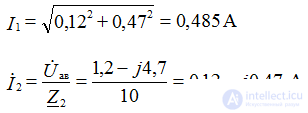
Rated current:
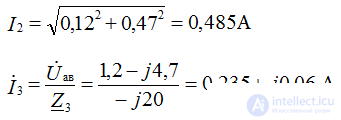
Rated current:

3. Calculation of the second harmonic

Complex stress

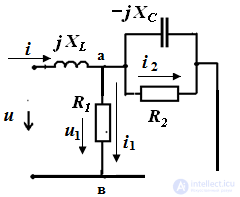
Decision
4 branches, two knots
You can solve any method: equivalent transformations, two nodes
Recalculation of reactance values

The effective value of the input voltage:

Determine the current source:

Determine the voltage between the nodes "av"

Effective voltage value:

Determine the currents in the branches:

Rated current:

Rated current:
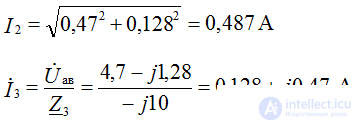
Rated current:

4. Final calculations. We determine the total effective values:


































Comments
To leave a comment
Electrical Engineering, Circuit design
Terms: Electrical Engineering, Circuit design